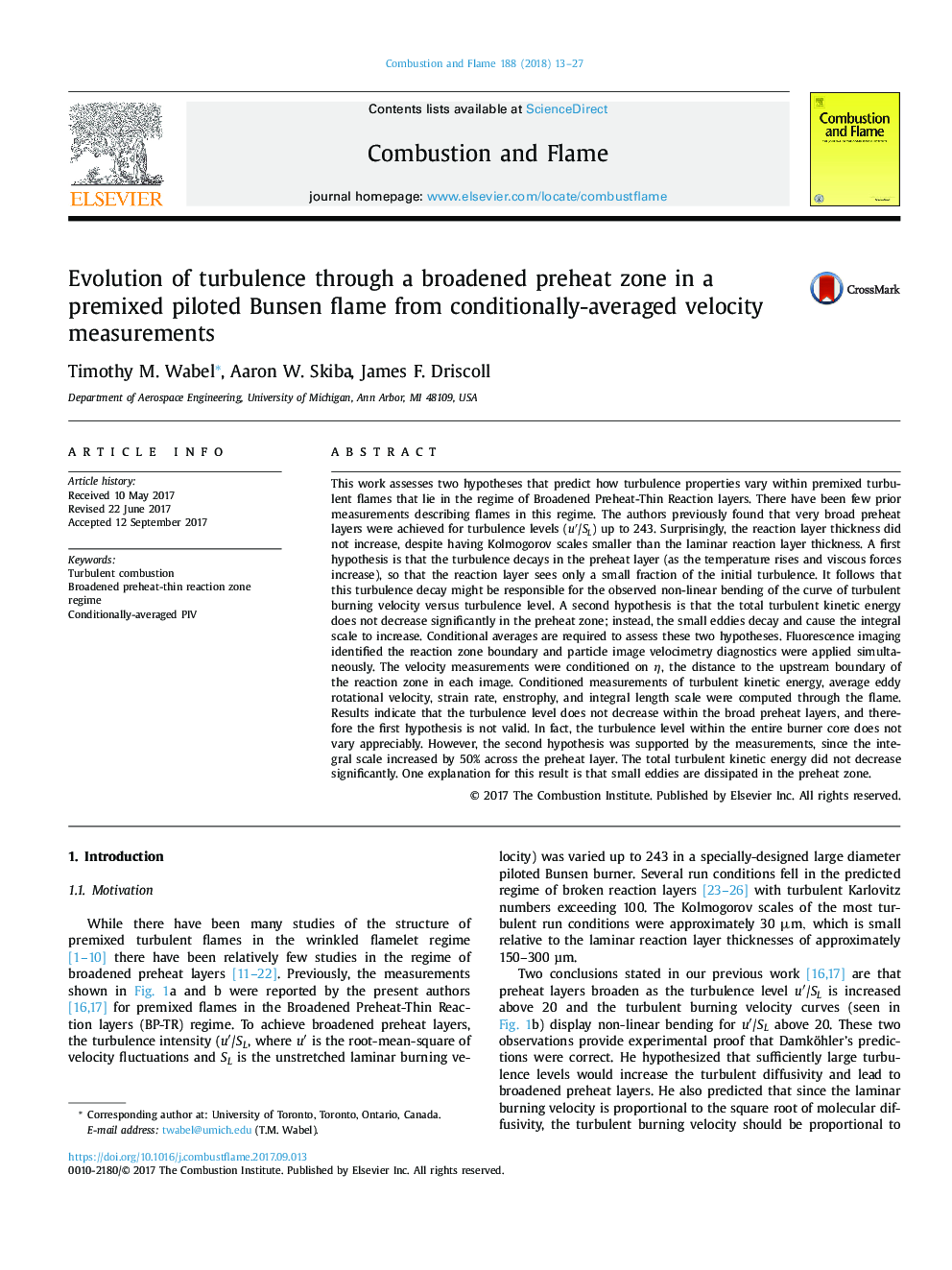| کد مقاله | کد نشریه | سال انتشار | مقاله انگلیسی | نسخه تمام متن |
|---|---|---|---|---|
| 4764326 | 1423549 | 2018 | 15 صفحه PDF | دانلود رایگان |
عنوان انگلیسی مقاله ISI
Evolution of turbulence through a broadened preheat zone in a premixed piloted Bunsen flame from conditionally-averaged velocity measurements
دانلود مقاله + سفارش ترجمه
دانلود مقاله ISI انگلیسی
رایگان برای ایرانیان
کلمات کلیدی
موضوعات مرتبط
مهندسی و علوم پایه
مهندسی شیمی
مهندسی شیمی (عمومی)
پیش نمایش صفحه اول مقاله

چکیده انگلیسی
This work assesses two hypotheses that predict how turbulence properties vary within premixed turbulent flames that lie in the regime of Broadened Preheat-Thin Reaction layers. There have been few prior measurements describing flames in this regime. The authors previously found that very broad preheat layers were achieved for turbulence levels (uâ²/SL) up to 243. Surprisingly, the reaction layer thickness did not increase, despite having Kolmogorov scales smaller than the laminar reaction layer thickness. A first hypothesis is that the turbulence decays in the preheat layer (as the temperature rises and viscous forces increase), so that the reaction layer sees only a small fraction of the initial turbulence. It follows that this turbulence decay might be responsible for the observed non-linear bending of the curve of turbulent burning velocity versus turbulence level. A second hypothesis is that the total turbulent kinetic energy does not decrease significantly in the preheat zone; instead, the small eddies decay and cause the integral scale to increase. Conditional averages are required to assess these two hypotheses. Fluorescence imaging identified the reaction zone boundary and particle image velocimetry diagnostics were applied simultaneously. The velocity measurements were conditioned on η, the distance to the upstream boundary of the reaction zone in each image. Conditioned measurements of turbulent kinetic energy, average eddy rotational velocity, strain rate, enstrophy, and integral length scale were computed through the flame. Results indicate that the turbulence level does not decrease within the broad preheat layers, and therefore the first hypothesis is not valid. In fact, the turbulence level within the entire burner core does not vary appreciably. However, the second hypothesis was supported by the measurements, since the integral scale increased by 50% across the preheat layer. The total turbulent kinetic energy did not decrease significantly. One explanation for this result is that small eddies are dissipated in the preheat zone.
ناشر
Database: Elsevier - ScienceDirect (ساینس دایرکت)
Journal: Combustion and Flame - Volume 188, February 2018, Pages 13-27
Journal: Combustion and Flame - Volume 188, February 2018, Pages 13-27
نویسندگان
Timothy M. Wabel, Aaron W. Skiba, James F. Driscoll,